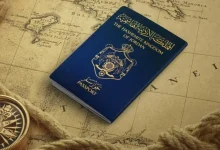The Role of Cultural Diversity in Fostering Closer Ties Between Peoples
Cultural diversity encompasses the myriad of cultural expressions, practices, beliefs, and values that characterize human societies. It serves not only as a testament to humanity’s rich tapestry but also as a powerful catalyst for fostering understanding and collaboration among diverse groups. In an increasingly interconnected world, where globalization has blurred geographical boundaries, the significance of cultural diversity in promoting harmony and cooperation between peoples has never been more pronounced. This article explores how cultural diversity facilitates closer ties between communities, nations, and cultures, emphasizing its role in promoting empathy, mutual respect, and collaboration.
Understanding Cultural Diversity
Cultural diversity refers to the variety of cultural identities that exist within a particular region or the world at large. It manifests in various forms, including language, traditions, religious beliefs, art, and social practices. According to UNESCO, cultural diversity is a source of exchange, innovation, and creativity that enriches societies. It fosters a sense of belonging and identity while allowing individuals to appreciate their own cultures alongside those of others. This appreciation can break down stereotypes and misconceptions, paving the way for dialogue and cooperation.
Promoting Empathy and Mutual Respect
One of the primary ways cultural diversity fosters closer ties between peoples is by promoting empathy and mutual respect. When individuals engage with different cultures, they develop a greater understanding of the experiences, challenges, and perspectives of others. This understanding is crucial in building empathy, which is the ability to comprehend and share the feelings of another.
For instance, intercultural exchanges—such as student exchange programs, cultural festivals, and international conferences—allow individuals to immerse themselves in unfamiliar cultural contexts. These experiences challenge preconceived notions and facilitate a more nuanced understanding of cultural practices. As participants learn about the customs and beliefs of others, they often find common ground, highlighting shared values such as family, community, and the pursuit of happiness.
Enhancing Dialogue and Collaboration
Cultural diversity also plays a pivotal role in enhancing dialogue and collaboration among diverse groups. In an era marked by global challenges—such as climate change, pandemics, and geopolitical tensions—collaboration across cultural boundaries is essential for developing innovative solutions. Diverse perspectives can lead to creative problem-solving, as different cultural backgrounds provide unique insights into addressing complex issues.
For example, in the realm of environmental sustainability, diverse cultural practices can contribute to innovative approaches to conservation. Indigenous knowledge systems, which often embody a deep understanding of local ecosystems, can be invaluable when integrated with scientific research. Collaborative efforts that draw upon both traditional and modern practices not only enhance the effectiveness of environmental initiatives but also foster mutual respect and learning among different cultural groups.
Bridging Economic Gaps
In addition to social and environmental benefits, cultural diversity can significantly impact economic development. By embracing cultural diversity, countries can enhance their economic competitiveness and foster innovation. Culturally diverse societies often attract a broader range of talent, which is essential for driving economic growth. Diverse teams bring varied perspectives and experiences, leading to more innovative solutions and products.
Moreover, cultural tourism is an increasingly important economic sector. By showcasing cultural heritage, traditions, and festivals, communities can attract visitors who are eager to learn and experience different cultures. This not only stimulates local economies but also fosters intercultural exchange, as tourists engage with local residents and their traditions.
Challenges and Misunderstandings
Despite the numerous benefits of cultural diversity, it is essential to acknowledge the challenges that can arise. Misunderstandings and conflicts may occur when individuals encounter unfamiliar cultural practices or beliefs. Stereotyping and prejudice can emerge from a lack of understanding, leading to tensions between groups.
To mitigate these challenges, education plays a crucial role. Promoting cultural literacy in schools and communities helps individuals develop the skills needed to navigate a diverse world. Education that emphasizes the importance of cultural diversity can foster appreciation and respect for different cultures, equipping individuals with the tools to engage constructively with others.
Case Studies in Cultural Diversity
Several examples around the globe illustrate how cultural diversity can enhance connections between peoples. One notable instance is the European Union, which was founded on the principles of promoting peace and cooperation among diverse nations. The EU’s commitment to cultural diversity is evident in its policies supporting multilingualism, cultural heritage preservation, and intercultural dialogue. Through programs such as Erasmus+, the EU facilitates educational exchanges that promote understanding and collaboration among young people from different member states.
Another example can be found in Canada, where multiculturalism is an integral part of national identity. The country’s policies actively promote the preservation of cultural diversity while fostering a shared sense of belonging. Cultural festivals, community initiatives, and inclusive policies encourage interactions among various cultural groups, enhancing social cohesion and mutual respect.
Conclusion
Cultural diversity is not merely a feature of modern society; it is a vital component in fostering closer ties between peoples. By promoting empathy, enhancing dialogue, and bridging economic gaps, cultural diversity serves as a foundation for collaboration and understanding in an interconnected world. While challenges persist, the benefits of embracing cultural diversity far outweigh the potential drawbacks. As societies continue to navigate the complexities of globalization, recognizing and valuing cultural diversity will be essential for building a more harmonious and cooperative global community.
In a world increasingly marked by division and conflict, the call for unity through diversity remains crucial. Embracing cultural diversity is not just a matter of policy or rhetoric; it is an ongoing commitment to understanding, respect, and collaboration. By valuing the rich tapestry of human culture, societies can work toward a future that celebrates diversity while fostering closer ties between all peoples.




